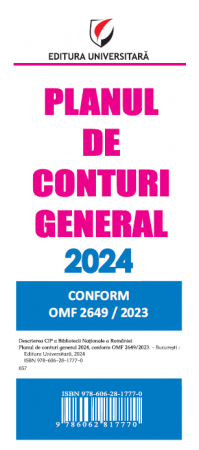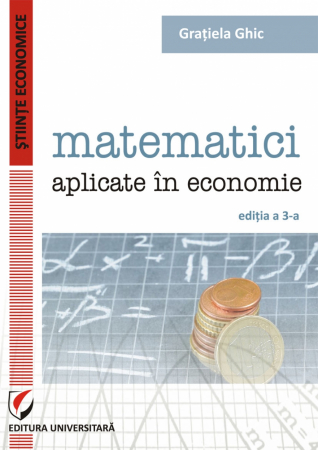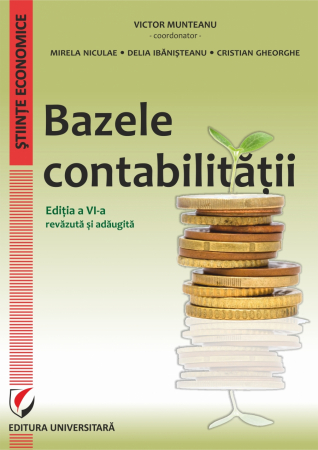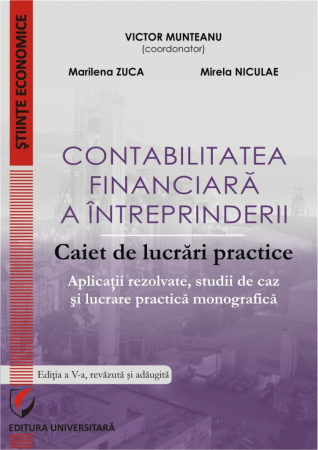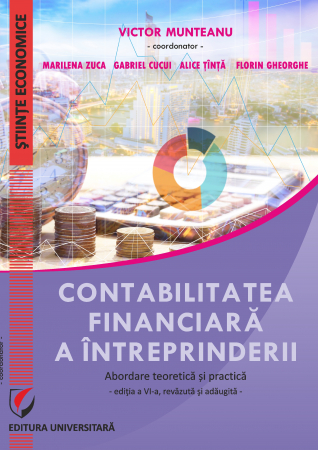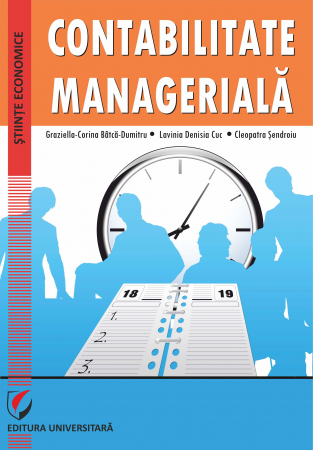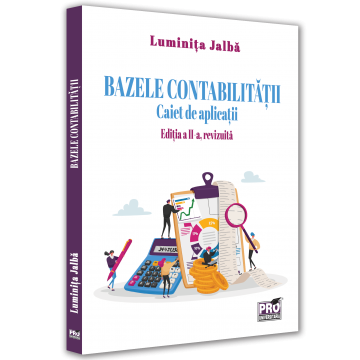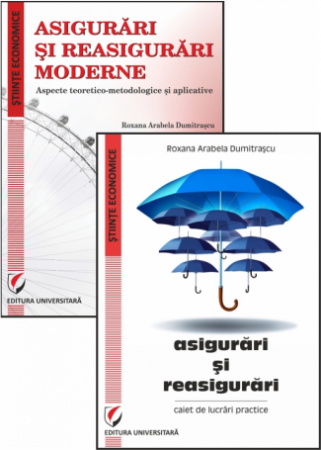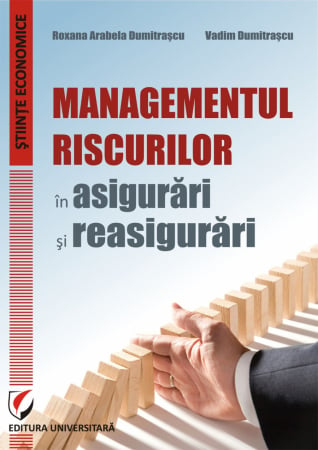Manuscript proposals: [email protected] / 0745 204 115 //// Tracking orders Individuals / Sales: 0745 200 357 / Orders Legal entities: 0721 722 783
Publisher: Editura Universitară
Author: Cezar Militaru, Bogdanel Dragut, Adriana Zanfir
ISBN: 978-606-28-0016-1
DOI: 10.5682/9786062800161
Publisher year: 2014
Edition: II
Pages: 264
Product Code:
9786062800161
Do you need help?
0745 200 357
- Description
- Download (1)
- Authors
- Content
- More details
- Reviews (0)
Quality management is what organizations practice to ensure products and services in accordance with the requirements of its customers. An ISO 9001: 2008 certificate proves that the quality management system meets all the requirements of this international standard. Whoever sets his standards wins, "everyone else starts with a disability: first they have to learn your standards, which have become international and the basis for certification." The design of the quality management system begins with the identification of the products (scope) and on this basis, going upstream, of the processes that govern them. Once we reach the processes, we start their investigation, we collect data (control of records), we analyze them, we establish, we implement, we follow actions and so always, cyclically.
Fulfilling the organization's policy and objectives in the field of quality lead to:
- gaining customer trust
- increasing customer satisfaction
- continuous improvement of the general performance
- active and systematic adaptation to changes in market conditions
- employee satisfaction
- improving performance
- transparency and efficiency of the internal processes of the organization
- avoiding errors instead of correcting them
- saving time and money
The application of complex quality management techniques contributes to achieving the strategic objectives of excellence and dynamism, supports the increase of operational efficiency and cost reduction by developing processes with safe operation and optimal regulation, also ensuring a balance between product and service quality.
Fulfilling the organization's policy and objectives in the field of quality lead to:
- gaining customer trust
- increasing customer satisfaction
- continuous improvement of the general performance
- active and systematic adaptation to changes in market conditions
- employee satisfaction
- improving performance
- transparency and efficiency of the internal processes of the organization
- avoiding errors instead of correcting them
- saving time and money
The application of complex quality management techniques contributes to achieving the strategic objectives of excellence and dynamism, supports the increase of operational efficiency and cost reduction by developing processes with safe operation and optimal regulation, also ensuring a balance between product and service quality.
-
Management prin calitate
Download
CEZAR MILITARU
BOGDANEL DRAGUT
ADRIANA ZANFIR
BOGDANEL DRAGUT
ADRIANA ZANFIR
Introduction / 9
Chapter 1: The conceptual framework of the quality of products and services / 11
1.1. Definitions of product and service quality / 11
1.2. Ways of organizing quality in organizations / 17
1.3. Quality now and in the future / 26
1.4. Elements specific to the quality of products and services / 28
Chapter 2: Theoretical elements regarding quality management / 36
2.1. Defining quality management / 36
2.2. Quality management functions / 38
2.3. Principles of quality management / 43
Chapter 3: Quality management system / 49
3.1. The importance of the quality management system / 49
3.2. The quality assurance model proposed by the ISO 9000/51 standards
Chapter 4: Total quality - essential element of the ISO 9000/65 series of standards / 65
4.1. Defining the total quality / 65
4.2. Total quality characteristics / 67
4.3. Principles of total quality / 68
4.4. Differences between exceeding customer expectations and quality / 70
Chapter 5: Total quality management / 74
5.1. Basic concepts / 74
5.2. Basic principles of quality management / 76
5.3. Advantages of introducing TQM / 79
5.4. Implementation of the TQM / 80 principles
Chapter 6: Quality planning / 86
6.1. Theoretical elements regarding the planning function / 86
6.2. Planning actions in the field of quality / 87
Chapter 7: Organizing activities related to quality / 100
7.1. Procedural organization / 100
7.2. Structural organization / 102
Chapter 8: Culture in the field of quality / 114
8.1. Theoretical elements regarding the culture of the organization / 114
8.2. The components of the organization's culture / 117
8.3. Culture in the field of quality / 119
8.4. Formation and development of a culture of quality at the level of the organization / 120
Chapter 9: Motivating and training staff for quality / 127
9.1. The relationship between human resources management and quality management / 127
9.2. Personnel strategy - the premise of success in the development of the organization in the field of quality / 131
9.3. Structures of motivation / 134
9.4. Forms of motivation / 137
9.5. Motivation for quality / 138
9.6. Staff training and qualification / 141
Chapter 10: Standardization, accreditation and quality certification / 147
10.1. Standardization of the quality of products and services. Organizations involved in the standardization process / 147
10.2. Accreditation of conformity certification bodies / 159
10.3. Certification of conformity of products and services / 164
Chapter 11: Quality audit / 171
11.1. Theoretical elements regarding the quality audit / 171
11.2. Quality management system audit methodology / 174
11.3. Internal quality audits / 177
Chapter 12: Development and implementation of a quality management system / 183
12.1. The stages of implementing the quality management system according to the ISO 9001: 2008/183 standard
12.2. Elaboration of the policy in the field of quality / 194
12.3. Customer orientation of the organization / 197
12.4. Documentation of the quality management system / 198
12.5. Process management in the organization / 203
12.6. Management analysis / 210
Chapter 13: Quality costs / 217
13.1. Defining quality costs and typology / 217
13.2. Quality cost management / 221
Chapter 14: Techniques and tools used in quality management / 225
14.1. Classical techniques and instruments / 226
14.2. Modern techniques and tools / 239
Chapter 15: Quality Awards / 248
15.1. Brief history of the evolution of quality awards / 248
15.2. The Japanese award “W.E. Deming ”/ 250
15.3. American National Prize "Malcolm Baldrige" / 251
15.4. European Quality Award EFQM / 253
15.5. The Romanian award for quality „J.M. Juran ”/ 255
Chapter 1: The conceptual framework of the quality of products and services / 11
1.1. Definitions of product and service quality / 11
1.2. Ways of organizing quality in organizations / 17
1.3. Quality now and in the future / 26
1.4. Elements specific to the quality of products and services / 28
Chapter 2: Theoretical elements regarding quality management / 36
2.1. Defining quality management / 36
2.2. Quality management functions / 38
2.3. Principles of quality management / 43
Chapter 3: Quality management system / 49
3.1. The importance of the quality management system / 49
3.2. The quality assurance model proposed by the ISO 9000/51 standards
Chapter 4: Total quality - essential element of the ISO 9000/65 series of standards / 65
4.1. Defining the total quality / 65
4.2. Total quality characteristics / 67
4.3. Principles of total quality / 68
4.4. Differences between exceeding customer expectations and quality / 70
Chapter 5: Total quality management / 74
5.1. Basic concepts / 74
5.2. Basic principles of quality management / 76
5.3. Advantages of introducing TQM / 79
5.4. Implementation of the TQM / 80 principles
Chapter 6: Quality planning / 86
6.1. Theoretical elements regarding the planning function / 86
6.2. Planning actions in the field of quality / 87
Chapter 7: Organizing activities related to quality / 100
7.1. Procedural organization / 100
7.2. Structural organization / 102
Chapter 8: Culture in the field of quality / 114
8.1. Theoretical elements regarding the culture of the organization / 114
8.2. The components of the organization's culture / 117
8.3. Culture in the field of quality / 119
8.4. Formation and development of a culture of quality at the level of the organization / 120
Chapter 9: Motivating and training staff for quality / 127
9.1. The relationship between human resources management and quality management / 127
9.2. Personnel strategy - the premise of success in the development of the organization in the field of quality / 131
9.3. Structures of motivation / 134
9.4. Forms of motivation / 137
9.5. Motivation for quality / 138
9.6. Staff training and qualification / 141
Chapter 10: Standardization, accreditation and quality certification / 147
10.1. Standardization of the quality of products and services. Organizations involved in the standardization process / 147
10.2. Accreditation of conformity certification bodies / 159
10.3. Certification of conformity of products and services / 164
Chapter 11: Quality audit / 171
11.1. Theoretical elements regarding the quality audit / 171
11.2. Quality management system audit methodology / 174
11.3. Internal quality audits / 177
Chapter 12: Development and implementation of a quality management system / 183
12.1. The stages of implementing the quality management system according to the ISO 9001: 2008/183 standard
12.2. Elaboration of the policy in the field of quality / 194
12.3. Customer orientation of the organization / 197
12.4. Documentation of the quality management system / 198
12.5. Process management in the organization / 203
12.6. Management analysis / 210
Chapter 13: Quality costs / 217
13.1. Defining quality costs and typology / 217
13.2. Quality cost management / 221
Chapter 14: Techniques and tools used in quality management / 225
14.1. Classical techniques and instruments / 226
14.2. Modern techniques and tools / 239
Chapter 15: Quality Awards / 248
15.1. Brief history of the evolution of quality awards / 248
15.2. The Japanese award “W.E. Deming ”/ 250
15.3. American National Prize "Malcolm Baldrige" / 251
15.4. European Quality Award EFQM / 253
15.5. The Romanian award for quality „J.M. Juran ”/ 255
Quality is desired by all, in everything and in everything, it involves confronting ourselves in obtaining, promoting and offering. It is a beginning made up of a series of challenges both at the level of organizations and at the level of the consumer.
Challenges are the component parts of a gear that you must constantly control and improve, through knowledge and perseverance.
This is why any product, process or system can be made visible by knowing and correctly applying the documents of the quality management system. The quality management system has a primary role in planning, conducting, keeping under control and improving any process carried out within the organization.
Through a correct quality management, the satisfaction of the organization's clients is increased and implicitly its development, thus ensuring the premises for the expansion of the sales market and the diversification of the range of executed products.
In order to be recognized for its merits in terms of quality or to determine the degree to which it has succeeded in achieving quality, an organization may opt for:
- certification - is the procedure by which the third party guarantees in writing that a product, process or service is in accordance with the requirements of a given norm.
- evaluation - is a global and systematic examination of the activities and results of the organization, taking as a reference a determined model of excellence.
- self-evaluation - is a global and systematic exam that the own organization carries out, according to its activities and results, taking as reference a determined model of excellence.
In the case of certification, the ISO 9000 series is a set of quality assurance standards, designed to give the customer confidence in meeting his needs. The realization of the norm, chosen as a reference, gives the organization the opportunity to obtain the certification.
A certified quality management system demonstrates the organization's commitment to quality and customer satisfaction. Confidence in the ability to produce "quality" of an organization is the basic premise for fruitful cooperation. Quality, which means the quality of processes and results, is and will always be an important, if not the most important, competitive factor. The eight principles of quality management are a means to guide the company towards the proposed goals and to continuously improve performance.
Quality assurance means the set of activities designed to ensure confidence that a product or service will meet quality requirements. The international standard ISO 9001: 2008 is a generic standard. Its objective is to establish international requirements for the quality management system in any field (producers, services, creation). The main advantage of ISO 9000 standards "is that they are the result of an international consensus on how to establish reliable quality systems that can be easily verified by the buyer, his representative or an independent body".
Quality management is what organizations practice to ensure products and services in accordance with the requirements of its customers. An ISO 9001: 2008 certificate proves that the quality management system meets all the requirements of this international standard. Whoever sets his standards wins, "everyone else starts with a disability: first they have to learn your standards, which have become international and the basis for certification." The design of the quality management system begins with the identification of the products (scope) and on this basis, going upstream, of the processes that govern them. Once we reach the processes, we start their investigation, we collect data (control of records), we analyze them, we establish, we implement, we follow actions and so always, cyclically.
Fulfilling the organization's policy and objectives in the field of quality lead to:
- gaining customer trust
- increasing customer satisfaction
- continuous improvement of the general performance
- active and systematic adaptation to changes in market conditions
- employee satisfaction
- improving performance
- transparency and efficiency of the internal processes of the organization
- avoiding errors instead of correcting them
- saving time and money
The application of complex quality management techniques contributes to achieving the strategic objectives of excellence and dynamism, supports the increase of operational efficiency and cost reduction by developing processes with safe operation and optimal regulation, also ensuring a balance between product and service quality.
Challenges are the component parts of a gear that you must constantly control and improve, through knowledge and perseverance.
This is why any product, process or system can be made visible by knowing and correctly applying the documents of the quality management system. The quality management system has a primary role in planning, conducting, keeping under control and improving any process carried out within the organization.
Through a correct quality management, the satisfaction of the organization's clients is increased and implicitly its development, thus ensuring the premises for the expansion of the sales market and the diversification of the range of executed products.
In order to be recognized for its merits in terms of quality or to determine the degree to which it has succeeded in achieving quality, an organization may opt for:
- certification - is the procedure by which the third party guarantees in writing that a product, process or service is in accordance with the requirements of a given norm.
- evaluation - is a global and systematic examination of the activities and results of the organization, taking as a reference a determined model of excellence.
- self-evaluation - is a global and systematic exam that the own organization carries out, according to its activities and results, taking as reference a determined model of excellence.
In the case of certification, the ISO 9000 series is a set of quality assurance standards, designed to give the customer confidence in meeting his needs. The realization of the norm, chosen as a reference, gives the organization the opportunity to obtain the certification.
A certified quality management system demonstrates the organization's commitment to quality and customer satisfaction. Confidence in the ability to produce "quality" of an organization is the basic premise for fruitful cooperation. Quality, which means the quality of processes and results, is and will always be an important, if not the most important, competitive factor. The eight principles of quality management are a means to guide the company towards the proposed goals and to continuously improve performance.
Quality assurance means the set of activities designed to ensure confidence that a product or service will meet quality requirements. The international standard ISO 9001: 2008 is a generic standard. Its objective is to establish international requirements for the quality management system in any field (producers, services, creation). The main advantage of ISO 9000 standards "is that they are the result of an international consensus on how to establish reliable quality systems that can be easily verified by the buyer, his representative or an independent body".
Quality management is what organizations practice to ensure products and services in accordance with the requirements of its customers. An ISO 9001: 2008 certificate proves that the quality management system meets all the requirements of this international standard. Whoever sets his standards wins, "everyone else starts with a disability: first they have to learn your standards, which have become international and the basis for certification." The design of the quality management system begins with the identification of the products (scope) and on this basis, going upstream, of the processes that govern them. Once we reach the processes, we start their investigation, we collect data (control of records), we analyze them, we establish, we implement, we follow actions and so always, cyclically.
Fulfilling the organization's policy and objectives in the field of quality lead to:
- gaining customer trust
- increasing customer satisfaction
- continuous improvement of the general performance
- active and systematic adaptation to changes in market conditions
- employee satisfaction
- improving performance
- transparency and efficiency of the internal processes of the organization
- avoiding errors instead of correcting them
- saving time and money
The application of complex quality management techniques contributes to achieving the strategic objectives of excellence and dynamism, supports the increase of operational efficiency and cost reduction by developing processes with safe operation and optimal regulation, also ensuring a balance between product and service quality.
If you want to express your opinion about this product you can add a review.
write a review

6359.png)
![Management by Quality [1] Management by Quality [1]](https://gomagcdn.ro/domains/editurauniversitara.ro/files/product/large/management-prin-calitate-879-9401.jpg)
